Bringing home a new, cute puppy can be such an exciting time for your family. That is, until one day, you come home and your favorite pair of shoes is completely destroyed, or the brand-new carpet is ruined. That is when you realize that you need to crate-train your dog. Crate training may have its pros and cons, but it is one of the best ways to help a puppy adjust to being a part of your family.
Crate training a puppy can be beneficial for both you and your new dog. In this blog post, we will delve into the main reasons why it is important to crate-train your dog. We will also learn some training steps here for successful house training.
Benefits of Crate Training
Some people think that using a crate is a cruel way to house a dog. However, proper crate training is an essential part of puppy training and would benefit your dog.
In the wild, dogs look for small dens where they can rest, hide, and take care of their babies. The crate mimics this den by providing your young dogs with a place of rest that is completely theirs.
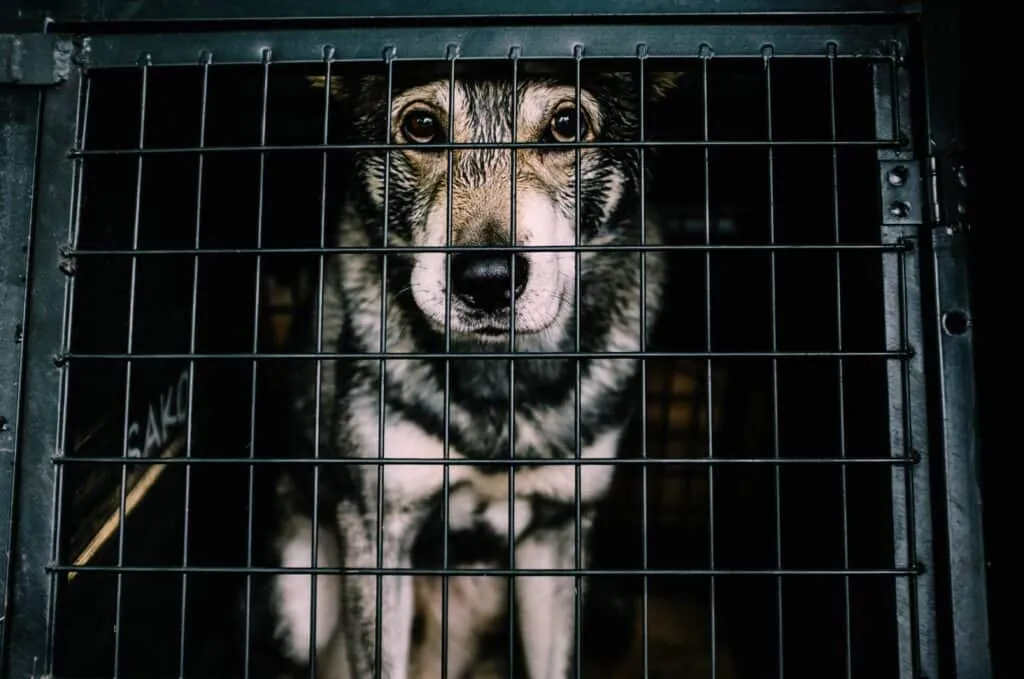
Aids in Housetraining, Potty Training, and Puppy Training
One main goal of crate training is to housetrain your dog. Since dogs make an association with the crate as their own little bedroom, they will not relieve themselves inside. With this attitude, your pup would be house-trained more easily.
In the rare instance that your pup soiled their crates, it may be that they have been alone for too long. It would be a sign for you to pay more attention to give them their bathroom breaks. In other instances, a dog who relieves himself inside the crate may be sick and unable to hold it back anymore. This would also be a way to remind you to pay more attention to your dog’s needs.
Puppies under six months of age should only be in the crates for a short time, around 3 or 4 hours at a time. Then, they should immediately go outside. This helps them learn that they should only go potty outside. This is part of their potty training, too.
Adult dogs can hold it for longer stretches of time. You can increase the time your dogs are left alone in the crate as they grow older.
Leaving a dog in a crate for so long can cause them to do their business inside the crate. Besides the fact that it is not hygienic, it will also lead your pup to assume that it is alright to do so. In the long run, they would be harder to potty train and get acclimated to relieving themselves in the yard or in a designated potty spot.
Prevents Separation Anxiety
Crate training can also help prevent separation anxiety for your new pet. When they are first left alone, they may be overwhelmed with fear, which causes them to destroy things around the house. Keeping your young dog in the crate when you are away helps ease the separation anxiety by giving them a safe place and smaller territory to “protect.”
Getting them inside the crate without a person around can give the dog a sense of security and safety. Eventually, your dog will develop a positive association with the crate as a safe place.
Some people have qualms about this type of training as it seems like imprisoning your pups. It is important to note that crate training should not be a part of your dog’s lifelong training.
Once your new dog has proven they are housebroken and can be trusted, you can begin to leave them out of the crate for small periods at a time unattended. Open the door of the crate and leave it at that so your pups can easily come and go when they want to. The crate should become a place your pup will go to voluntarily.
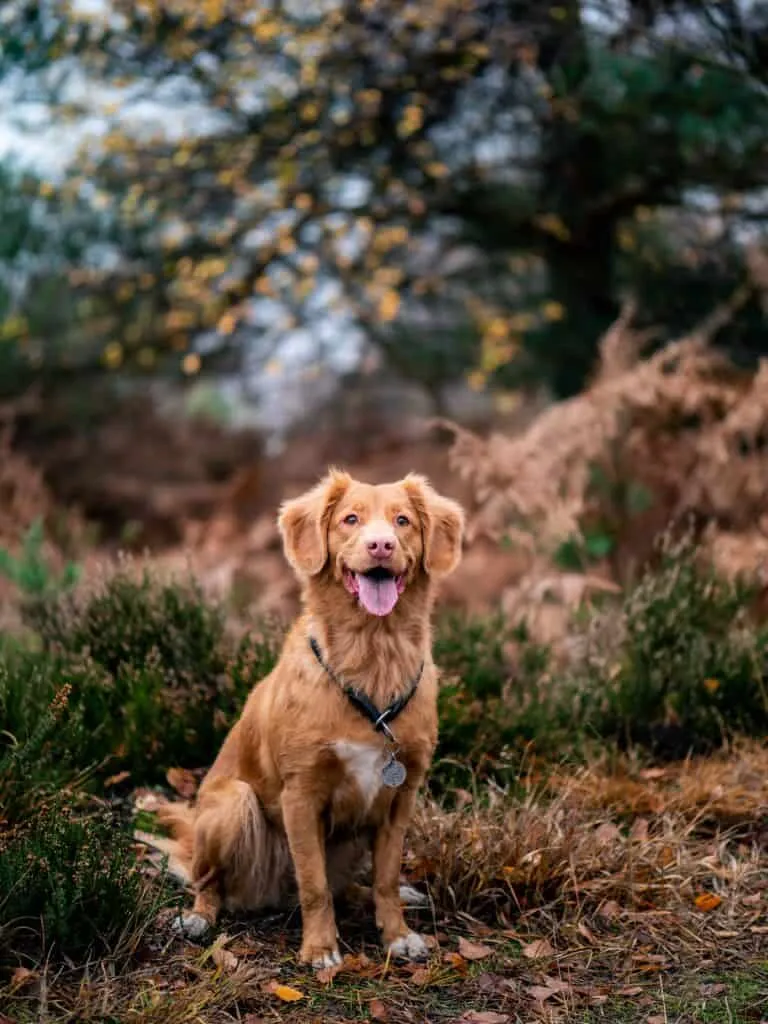
Steps to Crate Training
We have prepared here an easy guide to crate training. These training steps will help you and your dog understand the crate right.
Step 1: Buy the Crate
The first step to start crate training your puppy is, of course, buying a crate. But how do I know which crate to buy?
Going to any local pet store can be an overwhelming task! There are so many sizes, brands, and shapes to consider that it can be difficult to know where to start in choosing a crate.
You may choose to buy your crate at a pet store such as PetSmart or Petco. Amazon.com and other online providers also carry a wide variety of crates. Consider a few guidelines below to help you select the best crate for your new dog.
Choosing the Material
Crates come in different materials, such as plastic, metal, and fabric. The big thing to keep in mind with materials is to ensure there is good ventilation.
You want to make sure that your dogs feel comfortable inside and do not get too warm while staying in their crates.
Choosing the Size
The size of your new crate is very important. Make sure to choose a crate that is just large enough for your puppy to stand up and turn around.
If the crate is too large, they may make one part of the crate a bed and the other side a potty spot!
Renting vs. Buying
Some animal shelters will rent dog crates to new puppy owners. Renting a dog crate is a good option if you are bringing home a young dog who will soon outgrow his crate. You can then return the smaller crate for another one large enough for your growing puppy.
Another option is purchasing a crate that will fit your puppy even when he is full-grown. After all, you would want to be able to maximize the use of the crate.
Pet stores and online providers sell dividers that can be put inside the larger crate. These dividers help block off larger areas until your puppy has grown up a bit.
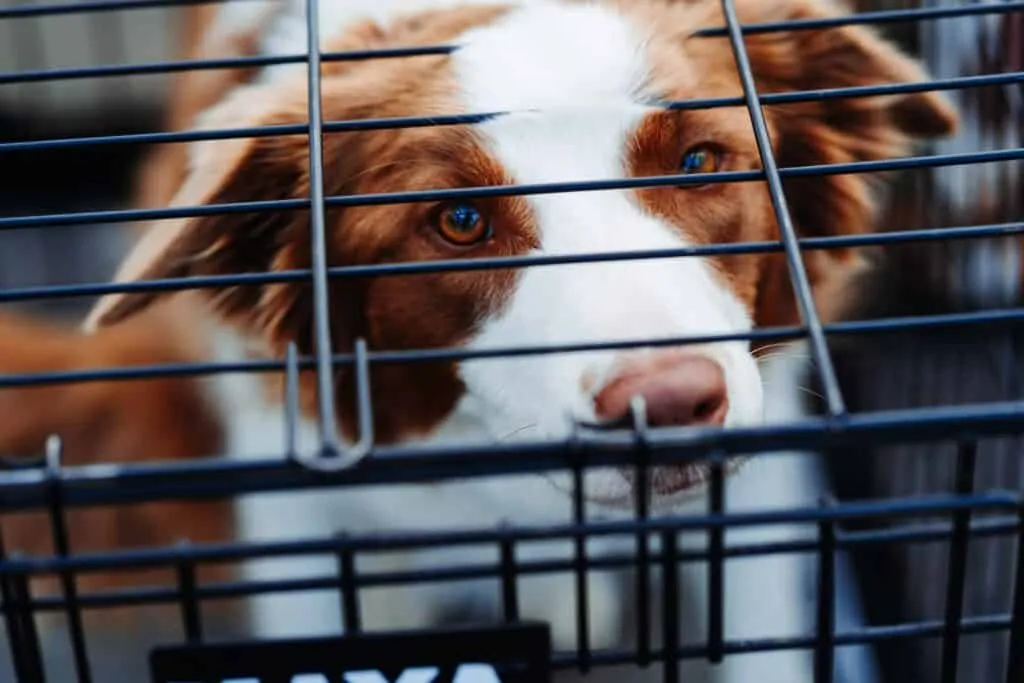
Step 2: Introduce the Crate to Your Pup
Crate training is a process that you do not want to rush! Now that you are done with the first step, here is Step 2 of this crate training process.
Once you bring the crate home, you should identify an area where the crate should be. Put the crate in a part of the house with fewer distractions so that when training time comes, there will be lesser disturbances.
Introduce your new pup to the crate. Place a small dog bed or soft blanket inside the crate and let your dog’s natural curiosity take over. Open the door of the crate and allow your dog to inspect it. Your dog may sniff, touch, and even try to bite the crate.
Remember, you want to keep the crate associated with positive vibes for your furry friend. This process may take some time, and it may take a few days for some puppies to enter the crate on their own.
Step 3: Get the Dog Inside the Crate
Some dogs may enter inside and lie down right away. Other dogs may be fearful or uninterested. If that is true for your pup, try placing small food treats or a toy inside while you talk to your dog in a happy voice.
If your new pup doesn’t go in all the way at first, don’t worry. Keep encouraging them, and do not force your dog or puppy to enter the dog crate. Take it slow to positively establish in your puppy’s mind that a crate is not a bad place to stay.
Once your dogs are familiar with the crate and enter the crate willingly, try and close the door for a short time. You may try giving them a peanut butter stuffed Kong dog toy , or even their meals in the crate, during a 5-10-minute span with the crate door closed.
In my case, I stayed beside the closed crate for a few minutes after the first time I closed the crate door after my pup went inside. I felt my dog glancing at me from time to time and was assured that the crate was a safe place.
Step 4: Leaving your Dog Alone Inside the Crate
After a few times that your dog is comfortable with entering the crate and having the door closed after him, try leaving the room for a few minutes. At this point, make sure not to leave your dog or puppy inside the crate for hours at a time.
Your puppy may whine or cry, but that’s okay. As with my pup, I heard him whine the minute he could not see me but I let him be for about two minutes, after which I glanced in for a few seconds and then left again.
We were doing this for a few more times throughout the week. Day after day, I would extend the length of time of my absence until I was able to leave him for 10 minutes without a whine or cry.
After 10 minutes, let your puppy out of the crate and immediately take them outside to use the bathroom. They may not go, but leave the crate door open. If they do, be sure to praise their efforts!
Step 5: Patience and Consistency
Continue with the process of leaving your dogs for short periods inside the crate several times each day. Encourage your dogs back in the crate, increasing the time as you go along.
This step requires that you remain consistent with house training. Give your dog about 30 minutes of crate time while you are still home, but not near them, before leaving them alone.
Once they stay in the crate without whining or crying for about 30 minutes, you may try leaving the house for a short period of time.
Be patient with your new pup, and be sure to remain consistent. This training process can take weeks (even months) to establish, and it is important that you stay positive.
Providing your dogs with treats would encourage them to stay in the crate for longer intervals of time. So remember to use positive reinforcement when needed.
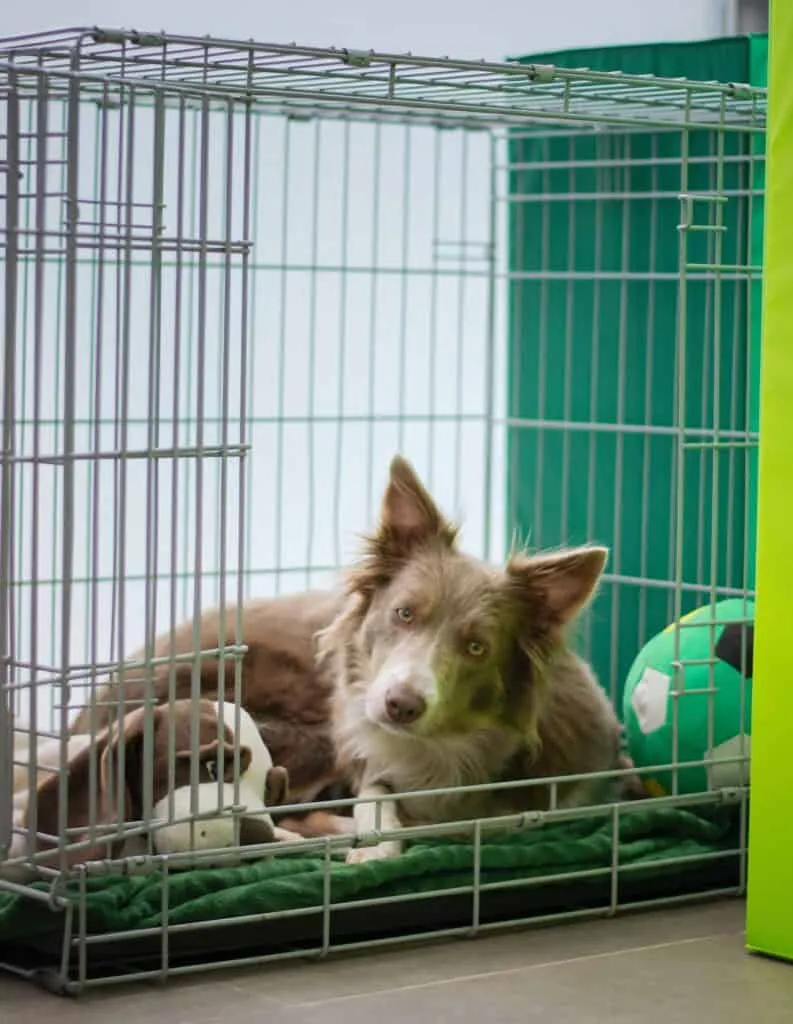
Step 6: Leaving Home while your Dog is Crated
Step 6 of this training process involves leaving your dog alone at home while he is crated. Start by being away for just a short period of time several times a day. You would not want to do this exceedingly fast as it could trigger extreme separation anxiety. Use a word such as “home” when putting your dog back in the crate to help them go in on command.
Each time your dog enters the crate, you should give them a small treat. The first few times you prepare to leave the house, you may want to have your dog enter the crate a few minutes before you turn around and depart.
Eventually, increase the time and leave your dog from short periods to longer periods. This will transition your dogs to feeling comfortable despite staying in the crate and being left alone for longer periods.
When you arrive back home after several minutes to one hour, let your puppy out immediately. Do not praise the dog when you arrive home because you want to make the arrival low-key and not create new bad habits.
Again, praise your pup for going to the bathroom when they go outside. Continue to make these short trips several times before leaving your new pup alone for longer periods.
Step 7: Using the Crate at Night
Puppy training also involves crate training during bedtime or at night. A young puppy cannot hold it through the entire night and may need to go outside before morning time. You want to follow the same steps of leading your puppy into entering the crate again with food treats.
It is a good idea to place the crate in the room where you sleep so you can hear them if they do start whining in the middle of the night to go outside. Also, if your dog can see you from inside the crate, even with the door closed, they will be less likely to feel agitated.
Depending on your dog’s age, temperament, and past experiences, crate training may take a bit longer. Older dogs may take a longer time to be crate trained.
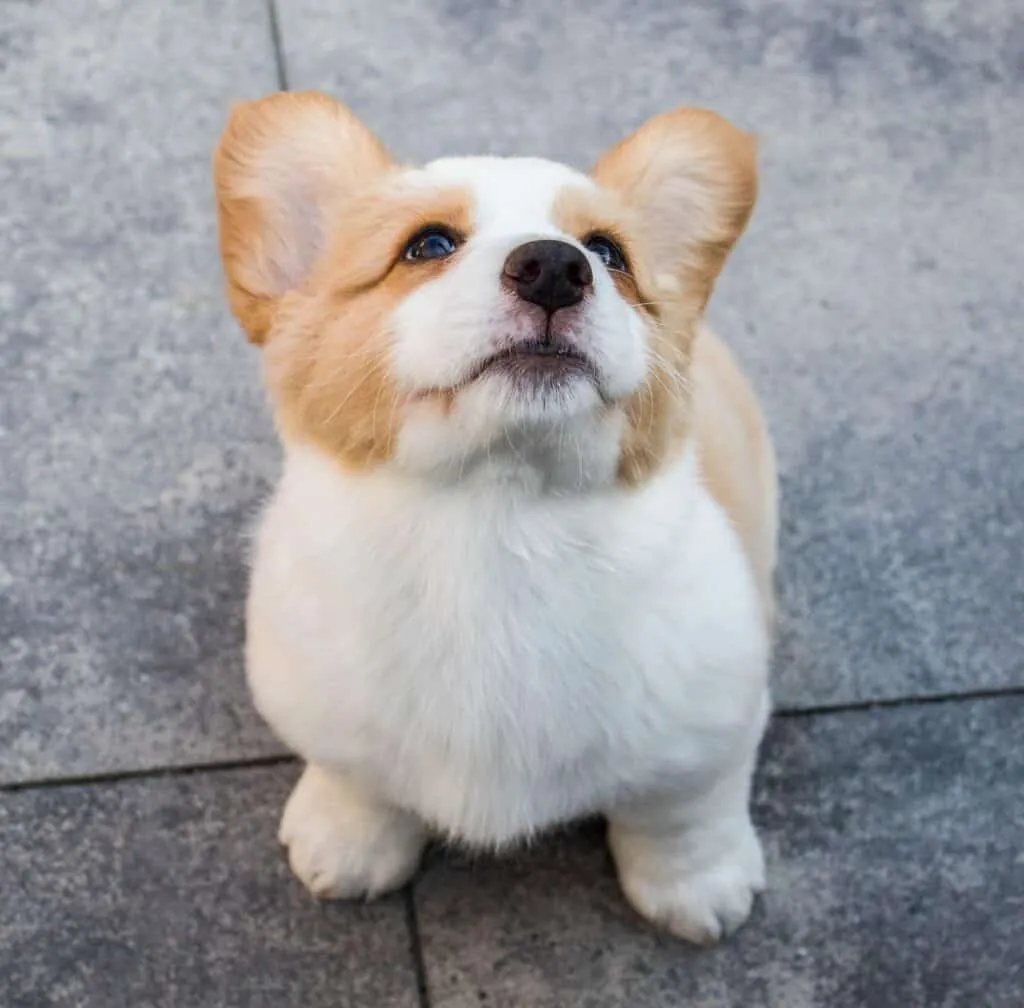
Is it OK to Let a Puppy Cry in the Crate?
It is likely that your new puppy will cry or whine a good deal at first when you lead it into the crate and close the door, especially at night. Don’t panic, and don’t reward the behavior! It may seem like a good idea to give the puppy a treat to help them feel better. This just teaches your new pup that whining gets them a treat.
If your new dog begins to whine, try to ignore it at first. Some pups will stop once they do not get any attention for the behavior. A young pup may be whining because of separation anxiety as they are no longer with their mother and siblings at night. It can be a hard transition for some furry babies.
When the whining persists for several minutes, try saying the word “potty” that you are using to train. If the dog reacts to this word, it may have the need to go outside to relieve itself. You may try opening the cage and taking the dog outside.
Train your dog to understand that going outside would only be to relieve himself and not play or cuddle. If they go potty, praise them. If they do not, simply take them back into the crate, close the door, and allow the whining to continue for a bit.
Do not yell at your dog or hit its cage for whining. This will only make the problem a bigger challenge.
Final Thoughts
Crate training your new puppy is an important process of having a happy, healthy dog. It helps with house training, prevents anxiety, reduces stress levels, and keeps your pup safe.
Be patient and consistent, and you will quickly see the rewards of the crate.